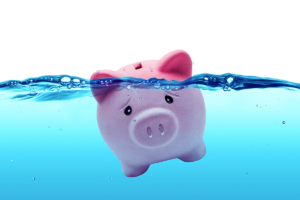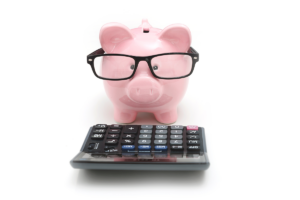How to Improve Your Finances in 2025

Debit vs. Credit Cards: Which Is the Better Way to Pay?
12/22/2024
How to Use Credit Cards Responsibly Without Going Into Debt
01/12/2025 Whether we like it or not, our financial situation has a big impact on our lives. Making smart money choices can propel you toward the future you desire.
Whether we like it or not, our financial situation has a big impact on our lives. Making smart money choices can propel you toward the future you desire.
Regardless of where you are starting from, there is likely some room for improvement in your finances. Luckily, it’s easy to take action to improve your financial situation this year. If you are ready to make a change, you are in the right place. Below you’ll find some of the top strategies to improve your finances this year.
Top Reasons to Improve Your Finances in the New Year
Everyone has their own reasons for wanting to improve their financial situation. But if you are coming up short on reasons, you’ll find two of the most important reasons to make a change below.
Long-Term Financial Stability
Long-term financial stability can completely transform your life for the better. When you aren’t trying to survive in the paycheck-to-paycheck cycle, you’ll open the door to more financial flexibility.
It’s safe to say that everyone trapped in the paycheck-to-paycheck cycle would prefer to eliminate the stress tied to their financial lives. When you take the right steps to improve your finances, increased financial stability might be within reach.
Peace of Mind
According to the American Physiological Association’s latest survey, 72% of Americans reported feeling stressed about money at least once in the prior month. Americans across the country are facing financial stress. But one way to combat this stress is to take action to improve your financial picture.
If you are seeking more peace of mind about your financial situation, actively improving your financial situation might help.
How to Improve Your Finances in 2025
When it comes to your financial situation, it is absolutely possible to improve it. While it might take a significant amount of energy and time to see progress, consistent effort should pay off in the form of a brighter financial outlook.
If you are ready to improve your finances this year, use the following steps as a roadmap to your success.
See Where You Stand
Before you dive into improving your financial situation, it’s important to start with an assessment of where you currently stand. Without a quick look at where you stand, it’s impossible to monitor your progress toward future goals.
When evaluating your current financial situation, there are a few things to look at, including your net worth and your monthly cash flow.
Your monthly cash flow measures how much money you are earning against how much you are spending each month. For example, if you earn $1,000 per month and only spend $900 per month, then your household has a positive cash flow of $100. Of course, a positive cash flow is ideal. If you are spending more than you make and have a negative cash flow, then it’s time to make a big change.
The second number to evaluate is your net worth. You can determine your net worth by subtracting the sum of your liabilities from the sum of your assets. Essentially, assets are anything you own that holds value or generates value for you. In contrast, liabilities, such as debts are a drain on your financial situation.
For example, let’s say that you have $10,000 in a savings account, $10,000 in your checking account, and a $5,000 balance on an auto loan. Without any other assets or liabilities, your net worth would be $15,000.

Ideally, you want to have a positive net worth. But if you have a heavy debt burden, you might find yourself with a negative net worth. As you improve your finances, one goal is to push your net worth higher.
Evaluate Any Debts
If you have debt, you aren’t alone. According to Business Insider, the average American held $104,215 in debt in the third quarter of 2023. That’s a significant debt burden for any household to carry.
Evaluating your current debts is an important part of improving your financial situation.
You can get a clear picture of your debt by listing out all of the balances owed and interest rates attached to your loan. In some cases, you might decide that your debt load is reasonable. But in others, you might decide that you are carrying too much debt for comfort.
If you want to get rid of your debt, there are different payoff strategies to consider. The two most common strategies are the snowball and avalanche methods.
The snowball method involves paying off debts in order from the smallest balance to the highest balance. With each debt you eliminate, you can add its monthly payment amount to your debt snowball going toward the next largest debt. As your snowball grows, you’ll tackle bigger debts.
The avalanche method involves paying off debts in order from the highest interest rate to the lowest interest rate. Each time you eliminate a debt, you’ll work on the debt with the next highest interest rate. The avalanche method is more mathematically efficient. However, you might miss out on celebrating the small wins provided by the snowball method along the way.
When choosing a debt repayment strategy, the most important part is to stick with the plan. Choose the repayment strategy that sparks your motivation. Some of us love to eliminate smaller debts first, while others are motivated by the numbers behind the avalanche method.
Take a Close Look at Your Spending
How much you spend has a big impact on your financial situation. To improve your finances, it’s critical to spend less than you earn each month. But that’s not the only reason to take a closer look at your spending.
Beyond making sure that you are spending within your means, taking a close look at your spending can help you spot unnecessary spending.
The reality is that most of us overspend in one area or another. Regularly looking at your transactions can help you avoid overspending on things that don’t matter to you. For example, you might spot an unwanted subscription or realize that your takeout habits are breaking the bank.
If you spot things you don’t like, make changes moving forward. Don’t beat yourself up about past spending mistakes. Instead, make the necessary changes in the future.
Set a Budget (And Stick With It)
A budget is a key part of any successful financial plan. While it’s easy to dismiss a budget as a tool for those trying to stay as frugal as possible, that’s not the only use for a budget. If you are trying to improve your finances, a well-planned budget can act as a roadmap to your goals.
Within a budget, you should include the usual categories like housing, food, transportation, and more. But beyond the essentials, you can include financial goals. For example, you might set aside funds each month toward an emergency fund, retirement savings, or even a vacation.
A realistic budget should include everything you are saving for. With a budget in place, you might be more likely to avoid accidentally overspending. Even the best-laid financial plans can go awry. If you get off track, use your budget as a tool to get back on track.
Create Savings Goals
Most of us have savings goals, even if we haven’t written them down on paper. Think about your future plans.
For example, you might have the goal of purchasing a home, which requires a significant amount of saving in advance.
If you don’t have specific savings goals, consider setting the goal of building a robust emergency fund. Even if you have other savings goals, building an emergency fund is an important goal to add to your list if you don’t have one yet.
When you have a savings goal in mind, set up a plan to hit your goal. For example, let’s say you want to save $1,200 in one year to fund the holiday season. With that, you’d need to set aside $100 per month to hit your goal.
Get Creative to Hit Your Savings Goals
Setting savings goals is one thing. But actually hitting your savings goals is another. While building savings is sometimes easier said than done, it is an essential part of improving your financial picture.
Luckily, it’s possible to build savings with a bit of creativity.
Cutting Extra Expenses
When you want to hit savings goals, slashing your spending is often the first place you’ll look. Depending on your situation, you might decide to cut back on categories such as restaurant food and apparel.
But if you want to make big savings, that often requires big changes. For example, you might decide to downsize into a smaller house or switch to a more economical ride to free up some cash in your budget.
Remember, you can always change your mind about these spending cuts. When you cut something from your budget, it might be a temporary solution to help you hit a specific savings goal.

Extra Income
Frugality can help you stretch out your income. But the reality is that you can only squeeze out so many pennies from your budget. If you aren’t able or willing to cut any more expenses out of your budget, there’s another option. Building extra income streams can help you reach your savings goals.
If you pick up a side hustle, you will be in good company. According to a LendingTree report, 44% of Americans have a side hustle.
And there is no shortage of side hustle opportunities. You can earn extra income in a wide variety of ways. A few examples include dog walking, freelance writing, selling goods, and starting a blog. It might take a few tries to find the right side hustle for you. But the extra income can make a big difference as you march toward a better financial future.
Work on Your Credit Score
Good credit scores are a key part of a healthy financial picture and can help you unlock attractive financing opportunities. With access to lower interest rates, borrowers with good credit scores might save thousands over those with bad credit scores.
If you want to improve your credit scores, making on-time payments is the right place to start. Your payment history accounts for 35% of your FICO scores. With that, making on-time payments a priority can be a boon for your credit scores.
Other ways to potentially improve your credit scores include correcting mistakes on your credit report and avoiding overspending on your credit cards.
The Bottom Line
A healthy financial picture might not happen overnight. But with consistent effort, your hard work can pay off in the form of a better financial situation. If you are ready to make a change, start taking action to improve your finances today.




